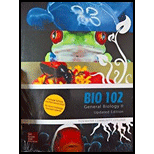
Histamine acts on the _____, causing redness and swelling.
a. white blood cells
b. cells lining blood vessels
c. outermost layer of skin
d. red blood cells
Introduction:
Inflammation is caused in the blood cells due to the entry of the pathogens. It causes redness and swelling in the blood vessels. It is released from the mast cells at the site of injury. It causes the blood vessels to dilate and increases the membrane permeability. The white blood cells reach the site of infection by squeezing through the spaces in the capillaries and blood vessels.
Answer to Problem 2MCQ
Correct answer:
Histamine acts on the cells lining blood vessels, causing redness and inflammation. Therefore, option b. is correct.
Explanation of Solution
Reason for the correct statement:
The injury to the blood vessels causes the release of the histamine from the mast cells. It is a chemical mediator of the damage of the cell membrane.
Option b. is given as “cells lining blood vessels”.
As, “Histamine acts on the cells lining blood vessels causing redness and swelling”, is the right answer.
Hence, option b. is correct.
Reasons for the incorrect statements:
Option a. is given as “white blood cells”.
White blood cells reach the site of infection after an injury but histamine is released during redness and inflammation of the blood vessels. So, it is a wrong answer.
Option c. is given as “outermost layer of skin”.
The outermost layer of the skin is called as epidermis which gets destroyed during infection but histamine is released from the mast cells during redness and swelling. So, it is a wrong answer.
Option d. is given as “red blood cells”.
Red blood cells are present at the site of injury but histamine is released from the site of redness and swelling. So, it is a wrong answer.
Hence, options a., c., and d. are incorrect.
Inflammation causes redness and swelling at the site of infection due to the infection caused by the microorganisms leading to the release of histamine from the mast cells.
Want to see more full solutions like this?
Chapter 34 Solutions
BIO 102 General Biology II Updated Edition (Tidewater Community College)
Additional Science Textbook Solutions
Microbiology Fundamentals: A Clinical Approach
Genetics: From Genes to Genomes
Campbell Essential Biology (7th Edition)
HUMAN ANATOMY
Physical Science
Biology: Life on Earth with Physiology (11th Edition)
- What is this?arrow_forwardMolecular Biology A-C components of the question are corresponding to attached image labeled 1. D component of the question is corresponding to attached image labeled 2. For a eukaryotic mRNA, the sequences is as follows where AUGrepresents the start codon, the yellow is the Kozak sequence and (XXX) just represents any codonfor an amino acid (no stop codons here). G-cap and polyA tail are not shown A. How long is the peptide produced?B. What is the function (a sentence) of the UAA highlighted in blue?C. If the sequence highlighted in blue were changed from UAA to UAG, how would that affecttranslation? D. (1) The sequence highlighted in yellow above is moved to a new position indicated below. Howwould that affect translation? (2) How long would be the protein produced from this new mRNA? Thank youarrow_forwardMolecular Biology Question Explain why the cell doesn’t need 61 tRNAs (one for each codon). Please help. Thank youarrow_forward
- Molecular Biology You discover a disease causing mutation (indicated by the arrow) that alters splicing of its mRNA. This mutation (a base substitution in the splicing sequence) eliminates a 3’ splice site resulting in the inclusion of the second intron (I2) in the final mRNA. We are going to pretend that this intron is short having only 15 nucleotides (most introns are much longer so this is just to make things simple) with the following sequence shown below in bold. The ( ) indicate the reading frames in the exons; the included intron 2 sequences are in bold. A. Would you expected this change to be harmful? ExplainB. If you were to do gene therapy to fix this problem, briefly explain what type of gene therapy youwould use to correct this. Please help. Thank youarrow_forwardMolecular Biology Question Please help. Thank you Explain what is meant by the term “defective virus.” Explain how a defective virus is able to replicate.arrow_forwardMolecular Biology Explain why changing the codon GGG to GGA should not be harmful. Please help . Thank youarrow_forward
- Stage Percent Time in Hours Interphase .60 14.4 Prophase .20 4.8 Metaphase .10 2.4 Anaphase .06 1.44 Telophase .03 .72 Cytukinesis .01 .24 Can you summarize the results in the chart and explain which phases are faster and why the slower ones are slow?arrow_forwardCan you circle a cell in the different stages of mitosis? 1.prophase 2.metaphase 3.anaphase 4.telophase 5.cytokinesisarrow_forwardWhich microbe does not live part of its lifecycle outside humans? A. Toxoplasma gondii B. Cytomegalovirus C. Francisella tularensis D. Plasmodium falciparum explain your answer thoroughly.arrow_forward
- Select all of the following that the ablation (knockout) or ectopoic expression (gain of function) of Hox can contribute to. Another set of wings in the fruit fly, duplication of fingernails, ectopic ears in mice, excess feathers in duck/quail chimeras, and homeosis of segment 2 to jaw in Hox2a mutantsarrow_forwardSelect all of the following that changes in the MC1R gene can lead to: Changes in spots/stripes in lizards, changes in coat coloration in mice, ectopic ear formation in Siberian hamsters, and red hair in humansarrow_forwardPleiotropic genes are genes that (blank) Cause a swapping of organs/structures, are the result of duplicated sets of chromosomes, never produce protein products, and have more than one purpose/functionarrow_forward
 Medical Terminology for Health Professions, Spira...Health & NutritionISBN:9781305634350Author:Ann Ehrlich, Carol L. Schroeder, Laura Ehrlich, Katrina A. SchroederPublisher:Cengage Learning
Medical Terminology for Health Professions, Spira...Health & NutritionISBN:9781305634350Author:Ann Ehrlich, Carol L. Schroeder, Laura Ehrlich, Katrina A. SchroederPublisher:Cengage Learning Human Physiology: From Cells to Systems (MindTap ...BiologyISBN:9781285866932Author:Lauralee SherwoodPublisher:Cengage Learning
Human Physiology: From Cells to Systems (MindTap ...BiologyISBN:9781285866932Author:Lauralee SherwoodPublisher:Cengage Learning





